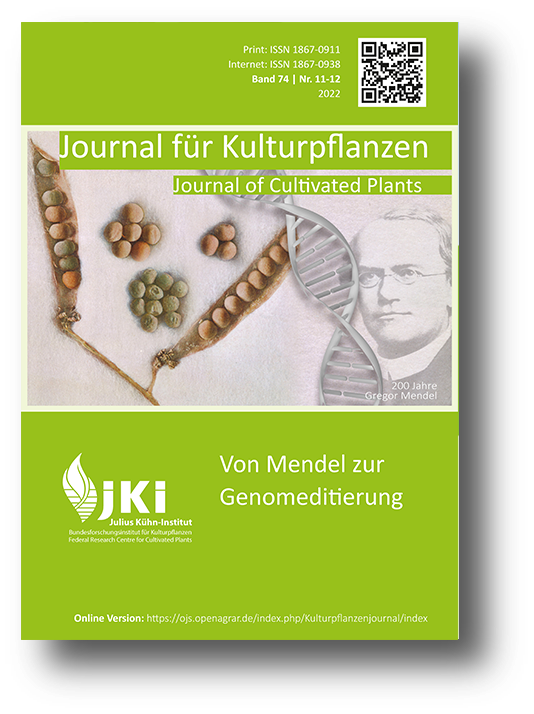Mendel and the onset of modern genetics: too good to be true?
DOI:
https://doi.org/10.5073/JfK.2022.11-12.03Keywords:
Gregor Mendel, Ronald A. Fisher, laws of inheritance, segregation ratios, peaAbstract
In the 18th and 19th century crossing experiments using maize, ornamentals and peas were carried out in Europe and in the USA. Mendel knew at least a part of the literature when he published his famous paper "Experiments on Plant Hybridisation" with the original German title "Versuche über Pflanzenhybriden" in 1866. In contrast to his predecessors, Mendel recognised the constant segregation ratios appearing in the progenies of the crossings. After being unnoticed for decades, his fundamental theory of heredity was rediscovered and experimentally verified by de Vries, Correns and Tschermak in 1900. Shortly after the English translation of Mendel's work became available in 1901, Raphael Weldon, one of the founders of biometry, published his doubts on Mendel's data since all observed segregation ratios were extremely close to the expected ones. Ronald A. Fisher concluded in a paper from 1936 that a large part of Mendel's results must have been falsified to agree closely with the postulated segregation ratios. The Mendel-Fisher controversy was born. In 1966, 100 years after Mendel's original paper was released, Stern & Sherwoodpublished a book comprising translations of Mendel's laws of inheritance, the rediscovery by de Vries and Correns and Fisher's paper. Subsequently, this led to the publication of numerous articles from different scientific disciplines on the Mendel-Fisher controversy. It may never be revealed, if it was simple luck, if Mendel sorted out plants, which did not represent the theory, or if he had an assistant "who knew too well what was expected", as Fisher speculated in 1936. Nonetheless, Mendel's work doubtlessly culminated in one of the most important breakthrough discoveries of the 19th century and is the starting point of modern genetics and plant breeding.
Downloads
Published
Issue
Section
License
Copyright (c) 2022 Ralf Uptmoor, Julian Kirchgesser

This work is licensed under a Creative Commons Attribution 4.0 International License.
The content of the journal is licensed under the Creative Commons Attribution 4.0 License. Any user is free to share and adapt (remix, transform, build upon) the content as long as the original publication is attributed (authors, title, year, journal, issue, pages).
The copyright of the published work remains with the authors. The authors grant the Journal of Cultivated Plants, the Julius Kühn-Institut and the OpenAgrar repository the non-exclusive right to distribute and exploit the work.







